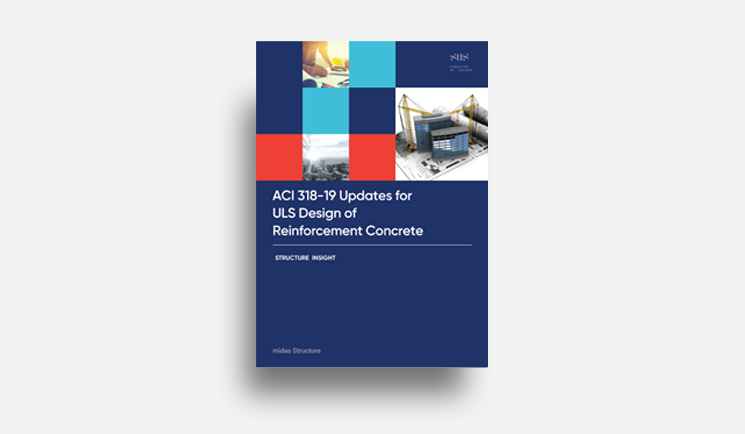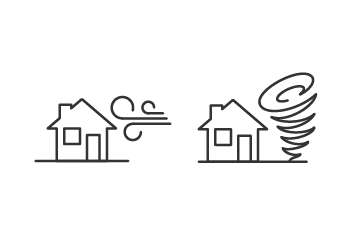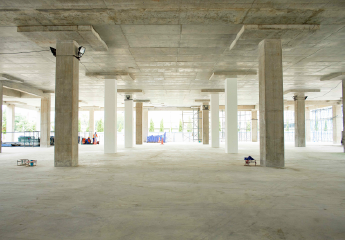ACI 318-19 Updates for ULS Design of Reinforcement Concrete
The new ACI318 Code, ACI318-19 is similar with the previous code, ACI318-14 in the basic approach. but in the current documents, there are a number of significant differences.
Through this brief document, you can discover the differences between the two codes, and understand their factors and design concepts.
In this document, the comparison between ACI 318-19 and ACI318-14 Code has 8 classified sections.
1. New rebar material,
2. Minimum reinforcement provisions
3. New reinforcement strain limit
4. Significant updates to shear provisions
5. Hanger reinforcement provisions
6. New equation for Ie
7. Modification of development length provisions
8. Modification of earthquake-resistance provisions.
Also, the specific standards are based on the ACI318M-19 and ACI318M-14 as SI Units for US Codes.
New Rebar Material & Revised Limitations
New provisions are introduced for the use of high-strength reinforcing. ACI 318-19 permits the use of Grade 690 for SI unit, reinforcement to resist moments, and axial forces from gravity and wind load combinations.
The use of higher-grade reinforcement raised concerns about serviceability like, cracking and deflections, which were addressed through a series of changes for slab and beam minimum reinforcement, an effective moment of inertia, and requirements for deflection calculations for two-way slabs.
Therefore, the limitations also revised due to the use of high-strength reinforcing bars.
1) Use of High-Strength Reinforcement
A major thrust of the ACI318-19 Code cycle was to expand permissible applications of high-strength reinforcement.
Current U.S. building codes limit rebar strength based on decades-old research, with most reinforcement used in concrete construction in the United States being Grade 420. Producers are now able to produce rebar, however, that is almost twice as strong as it was several decades ago.
Strength and ductility concerns were addressed by introducing new requirements for mechanical properties of reinforcing bars, adjusting the method for calculating the strength reduction factor for a moment and combined moment and axial load, revising development length provisions, and limiting the value of fy that can be used for calculating the maximum axial compressive strength, Pn,max of columns.
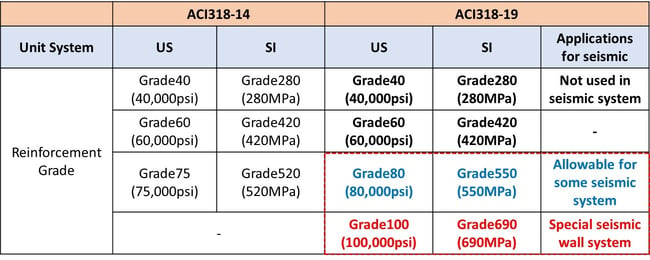 Table 1. The Comparison Between ACI318-14 and ACI318-19
Table 1. The Comparison Between ACI318-14 and ACI318-19It is likely that Grade 690 reinforcement will be used mostly for vertical bars of shear walls and columns, though it might also be used for heavily loaded floor systems.
Substantial new research and others has demonstrated acceptable performance of members of special seismic systems reinforced with Grade 550 and Grade 690.
Recognizing this, ACI 318-19 now permits special moment frames with Grade550 reinforcement and special structural walls with Grade 550 and Grade 690.
The provisions allow the use of the higher grades to resist moments, axial forces, and shear. To accommodate these higher grades, additional restrictions on hoop spacing, beam-column joint dimensions, and lap splice locations have been added that will contribute to the more reliable performance of special structural systems.
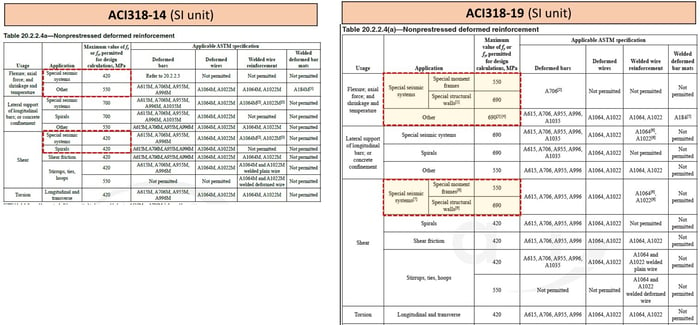
For usage of flexural, axial force and shrinkage and temperature, also shear forces, Grade 550 is allowed for special moment frames. Also, Grade 690 is allowable for special structural walls.
But, longitudinal reinforcement over 550MPa is not permitted for intermediate moment frames and ordinary moment frames resisting earthquake demands.
2) Minimum Slab Thickness Requirements
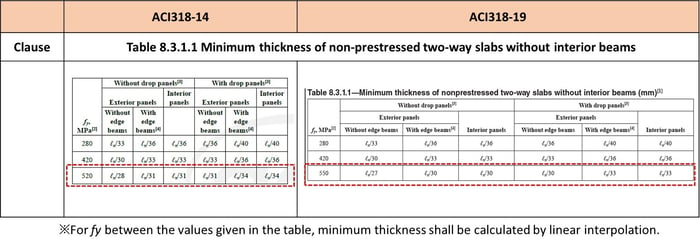 Table 3. Minimum Thickness of Non-Prestressed Two-Way Slabs without Interior Beams
Table 3. Minimum Thickness of Non-Prestressed Two-Way Slabs without Interior BeamsACI 318-19, Table 8.3.1.1 for minimum thickness of non-prestressed two-way slabs without interior beams is revised to include Grade 550.
This change affects the calculation of minimum slab thickness for fy exceeding Grade 420. The previous code that allowed up to Grade 520 was changed to Grade 550, and related regulations were modified.
3) Upper Limit for fy is introduced for minimum flexural reinforcement As,min calculations
 Table 4. Minimum Flexural Reinforcement in Non-Prestressed Beams
Table 4. Minimum Flexural Reinforcement in Non-Prestressed BeamsFor the calculation of the minimum flexural reinforcement amount for beams with fy exceeding 550MPa, ACI 318-19, 9.6.1.2 states that “the value of fy shall be limited to a maximum of 550 MPa.”
ACI 318-14 did not permit the use of flexural reinforcement exceeding 550MPa for beams. This change affects the flexural designs of beams with fy exceeding 550MPa.
The As.min values calculated by equations 9.6.1.2 (a) and (b) (Table 4) will be same as for Grade 550 reinforcement even if the higher strength reinforcement is utilized in the design.
4) Upper Limit for fy is introduced for maximum axial compressive strength, Pn, max Calculations.

For the calculation of the maximum axial compressive strength, Pn,max for non-prestressed and prestressed members with exceeding g Grade 550, ACI 318-19, 22.4.2.1 states that “the value of fy shall be limited to a maximum of 550MPa.”
ACI 318-14 did not permit the use of reinforcement exceeding Grade 550.
This change affects the designs of structural members with exceeding Grade 550. The P0 values calculated by Eq. 22.4.2.2 and 22.4.2.3 (Table 5) will be same as for Grade 550 reinforcement even if the higher strength reinforcement is utilized in the design.
5) Lower Limit of 0.5db is introduced for transverse reinforcement index, Ktr, when fy ≥ 550MPa.
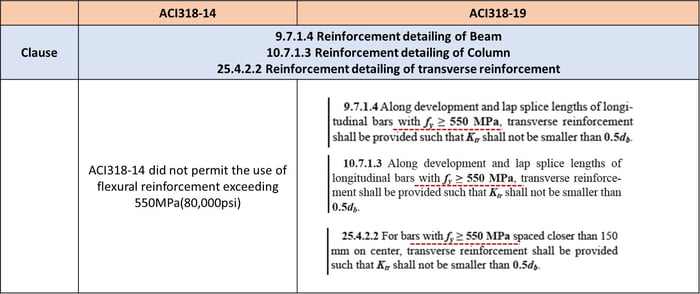
ACI 318-19, 9.7.1.4, 10.7.1.3, 25.4.2.2 (Table 6) states that “along development and lap splice lengths of longitudinal bars with Grade 550 or more, Ktr, shall not be smaller than 0.5db.”
ACI 318-14 did not permit the use of flexural reinforcement with Grade 550 or more for beams and columns.
The requirement for a minimum value of Ktr along development and splice lengths improves ductility.
6) Modulus of Rupture Equation is modified for fy exceeding 550MPa in non-prestressed slab systems.

ACI 318-19, 8.3.1.1 states that “for fy exceeding 550MPa, the calculated deflection limits in 8.3.2 shall be satisfied assuming a reduced modulus of rupture,
 for a two-way slab. This change leads to higher deflections for exceeding grade 550, in non-prestressed two-way slab systems.
for a two-way slab. This change leads to higher deflections for exceeding grade 550, in non-prestressed two-way slab systems.
Minimum Reinforcement Provisions are Revised
ACI 318-14 requirements were based on reinforcement type and grade.
The minimum flexural reinforcement regulations according to the reinforcement type and grade were integrated into one in ACI318-19
1) Modulus of Rupture Equation is modified for fy exceeding 550MPa in non-prestressed slab systems.
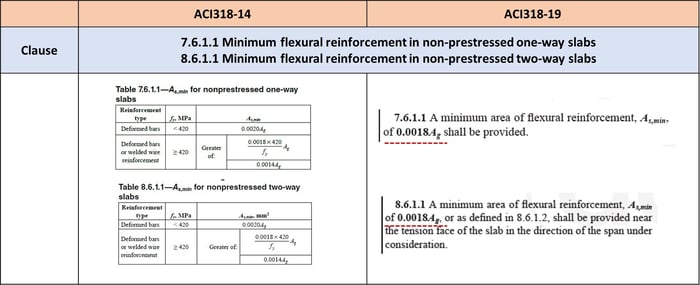
ACI 318-19, 7.6.1.1 states that “a minimum area of flexural reinforcement, As,min, of 0.0018 Ag shall be provided.”
Deformed bars with the yield strength of reinforcement, fy < 420MPa: The minimum area of flexural reinforcement, As,min, was equal to 0.0020 Ag.
Therefore, the As,min requirement is reduced by 10% in ACI 318-19. Deformed bars or welded wire reinforcement with the yield strength of reinforcement, fy ≥ 420MPa: The minimum area of flexural reinforcement, As,min, was greater of two equations.
Therefore, the As,min requirement stayed unchanged for Grade 420 reinforcement in ACI 318-19. However, for higher grade reinforcement, there is an increase in the As,min requirement. For example, for Grade 550, Grade 690 reinforcements, the new, As,min requirement is 0.0018 Ag, instead of the ACI 318-14 value of 0.0014 Ag (i.e. 28.6% increase in ACI 318-19).
This change unifies the minimum flexural reinforcement requirement irrespective of reinforcement grade.
2) Minimum Shear Reinforcement in Non-Prestressed Beams is Revised.

In ACI318-19, Minimum Shear reinforcement in non-prestressed beams are also revised.
In ACI318-14, the formula using the Vc calculation formula was judged, but in ACI318-19, it has been changed to a fixed formula. But it seems almost no numerical impact between 14 to 19 as shown.
New Reinforcement Strain Limit is introduced for non-prestressed members
This is new definition of εt, associated with tension-controlled limit.
1) Adjustment to the Strength Reduction Factor, φ
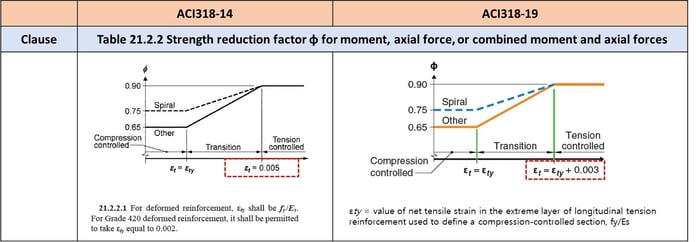
Before ACI 318M-14, the compression-controlled strain limit was defined as 0.002 for Grade 420 reinforcement and all prestressed reinforcement, but it was not explicitly defined for other types of reinforcement. The compression-controlled strain limit εty is defined in 21.2.2.1 and 21.2.2.2 (Table 10) for deformed and prestressed reinforcement, respectively.
Beams and slabs are usually tension-controlled, whereas columns may be compression-controlled. Some members, such as those with small axial forces and large bending moments, experience net tensile strain in the extreme tension reinforcement between the limits of εty and “εty + 0.003”.
These sections are in a transition region between compression-controlled and tension-controlled.
In ACI 318-19, Table 10 for strength reduction factor, φ, for moment, axial force, or combined moment and axial force, the tension-controlled strain limit is defined as an expression of fy to explicitly cover non-prestressed reinforcement grades other than Grade 420. Therefore, beginning with the 2019 Code, the expression, εty + 0.003, defines the lower limit on εt for tension-controlled behavior.
2) Reinforcement Strain Limit is revised for slabs and beams. Satisfy tension is controlled in Table 11
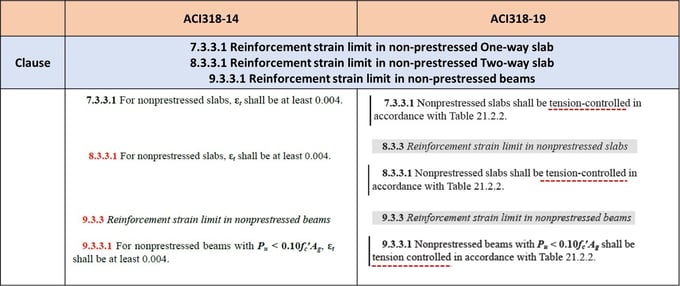
ACI 318-14, 7.3.3.1, 8.3.3.1 and 9.3.3.1 stated that “for non-prestressed slabs and beams, εt, shall be at least 0.004.”
ACI 318-19 states that “non-prestressed slabs & beams shall be tension-controlled in accordance with Table 10.”
This change leads to more economical designs for non-prestressed slabs and beams by eliminating the need to add more tension-steel just to satisfy a lower steel strain limit without any gain in the flexural design strength due to reduced strength reduction factor,φ.
Significant Updates to Shear Provisions
Maybe, this section is large change parts from ACI318-14.
ACI 318-19 sections on one-way shear and two-way shear (i.e., punching shear) consolidate what was previously a wide range of equations.
1) One-Way Shear Strength Provisions in Relation with Vc for Non-Prestressed Members are modified substantially.
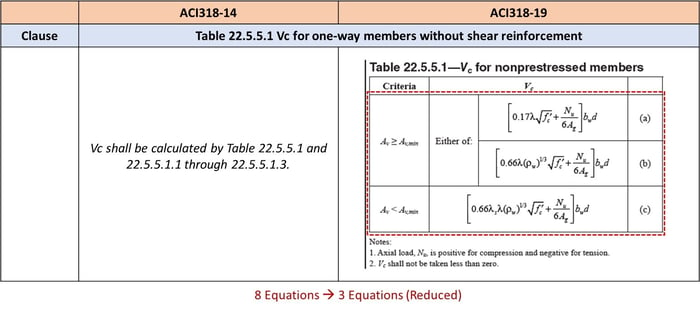 Table 12. Vx for One-Way Member without Shear Reinforcement
Table 12. Vx for One-Way Member without Shear ReinforcementOne-way shear strength provisions in relation with Vc for non-prestressed members are modified substantially.
ACI 318-19 updates shear capacity to reflect research findings on the effect of flexural reinforcement, ρw , and section depth, size effect factor, λs, using test data.
ACI 318-19, 22.5.5.1 states that, “for non-prestressed members, Vc shall be calculated by Table 22.5.5.1 and 22.5.5.1.1 through 22.5.5.1.3.”
The new Table 22.5.5.1 is titled Vc for non-prestressed members and aims to unify the ACI 318-14 provisions of :
- 22.5.5: Vc for non-prestressed members without axial force
- 22.5.6: Vc for non-prestressed members with axial compression
- 22.5.7: Vc for non-prestressed members with significant axial tension
- The new Table 22.5.5.1 introduces criteria for Av and Av,min that results in a set of equations to calculate Vc.
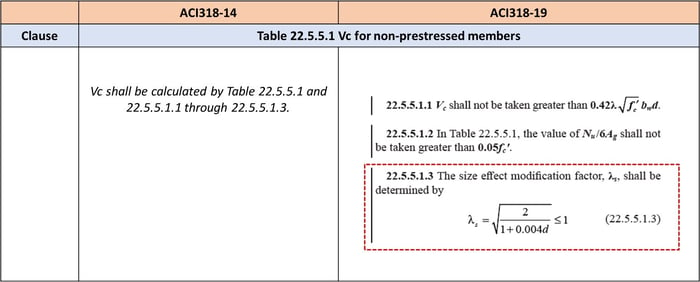
ACI 318-19, 22.5.5.1.1 states that “Vc shall not be taken greater than


ACI 318-19, 22.5.5.1.3 states that “The size effect modification factor, λs , shall be determined by equation 22.5.5.1.3.
The changes account for the size effect and low reinforcement levels for members without shear reinforcement.
It also simplifies and reduces the equations for non-prestressed concrete members with and without axial load effects.
The impact of this change will vary and can only be determined after implementation for various conditions.
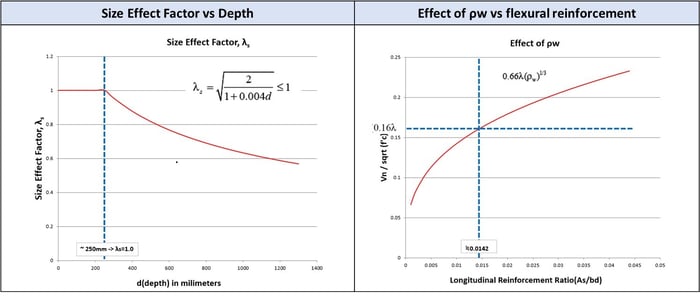 Figure 1. Size Effect Graph
Figure 1. Size Effect Graph
The size effect factor, λs, is the factor used to modify shear strength based on the effects of member depth. As shown left graph, it becomes less than 1.0 when the effective depth is 250mm as the starting point.
Also, the right graph is a graph comparing the longitudinal reinforcement ratio with the variable factor, 0.66λ(ρw)1/2, listed in Table 22.5.5.1.
ρw included in Table 22.5.5.1 Vc for non-prestressed members, the longitudinal flexural reinforcement affects the shear design.
As the longitudinal flexural reinforcement ratio increases, the shear capacity of concrete increases.
Compared with the constant 0.16λ in ACI318-14, if the longitudinal reinforcement ratio is about 1.42% or more, the shear capacity by the formula of ACI318-19 is greater than that of ACI318-14.
2) Two-Way Shear Strength in Vc for Non-Prestressed Members is revised regarding as size effect factor
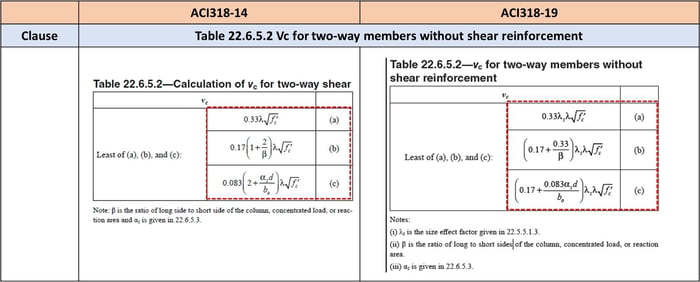
ACI 318-19, Table 22.6.5.2 now incorporates the size effect factor, λs, in equations (a), (b), and (c). Likewise, this change accounts for the depth effect of slabs without shear reinforcement.
For two-way slabs without shear reinforcement and if effective depth is more than 250mm, the size effect factor will result in reduced two-way shear strength values as compared to ACI 318-14.
3) Bidirectional One-Way Shear Effects are to be considered.

The interaction of one-way shear forces acting along orthogonal axes shall need to be considered per ACI 318-19 as provision 22.5.1.11 states that “if the shear ratio is more than 0.5 by each direction, Equation 22.5.1.11 shall be satisfied.”
4) Upper Limit for the Nominal Shear Strength of Walls, Vn
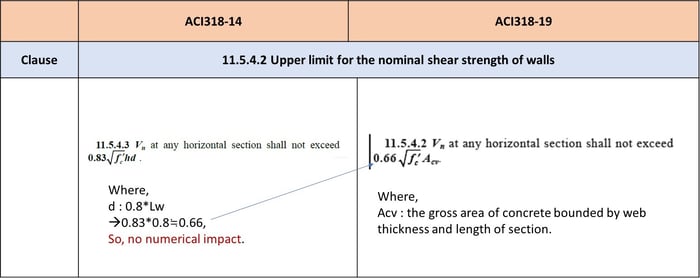
ACI 318-19, 11.5.4.2 states that “Vn at any horizontal section shall not exceed


This limit is intended to guard against diagonal compression failure in structural walls. The change creates consistency in the calculation of the in-plane shear strength of structural walls between Code chapters 18 (18.10.4) and 11 (11.5.4).
However, it has no numerical impact as the d is already taken as 0.8lw and Acv equals hlw.
5) The Nominal Shear Strength, Vn, Calculations for Walls are modified.
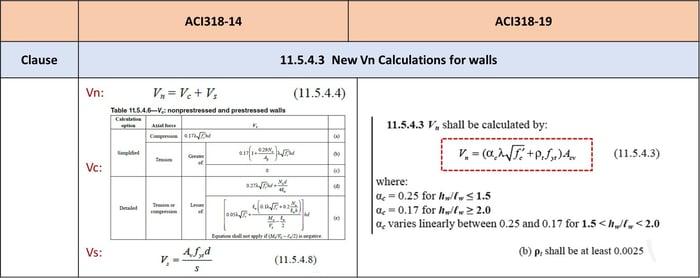
ACI 318-19, 11.5.4.3 states that to improve consistency in the Code, the nominal in-plane shear strength equation in section 11.5.4.3 now has the same form as the shear strength equation used in section 18.10.4.1.
Accordingly, sections 11.5.4.6 and 11.5.4.7 of ACI 318-14 for Vc calculations, and section 11.5.4.8 of ACI 318-14 for Vs calculation are completely removed from ACI 318-19. The detailed calculation option allowed within Wall is also removed by the removal of the ACI 318-14, Table 11.5.4.6. The impact of this change can only be determined after implementation for various conditions.
6) In-Plane Vu Criteria is modified for determining the minimum reinforcement for walls.
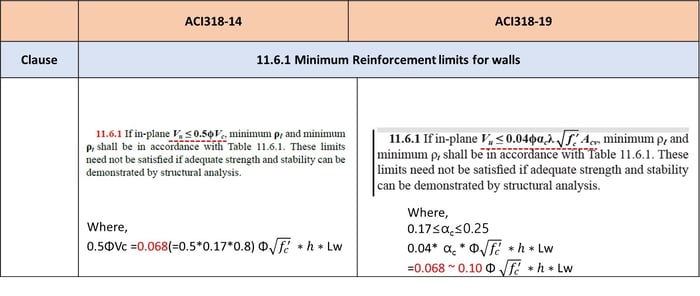 Table 18. Minimum Reinforcement Limits for Walls
Table 18. Minimum Reinforcement Limits for WallsThis change results in a similar threshold value for Vu criteria where minimum reinforcement shall be acceptable.
In ACI318-19, depending on the height, hw, by the length of the entire walls, lw, the limits values may change.
 Banner Title Products
Banner Title Products



